|
|
| Negronne |
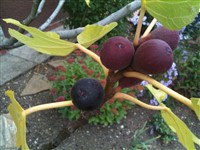
This cultivar has been present in South of France for a very long time and was grown by J.B. de la Quinitinie in the Versailles Castle during Louis XIV. This famous gardener described Negronne in 1692. Its presence in the Paris area, in England and even in North America demonstrates its resistance to cold and its ability to ripen fruits in cool climates with short autumns.
Negronne is a tree of average vigor, easy to train as a single or multi-stemmed tree and is adapted to small gardens. It has a very good cold resistance due to its weak growth and fast hardening of its new wood; even in shady location (about 30%), the wood is well hardened at the end of the season.
This variety is of particular interest for its regular blue-black brebas production of very good organoleptic qualities. The fruits are of average size (about 50 g) and resist very well to humid conditions. They are especially juicy, a little creamy with a pronounced and complex taste containing very present fruity notes. The sugar content may sometimes seem to be very high when the fruit is a little more than ripe. The taste is more balanced when the fruit is soft.
The main crop is heavy (around 300 figs in 2012), but all fruits don’t rippen in Vienna. As an average, only 2/3 of the crop may be harvested in the periphery of Vienna. The fruits are very resistant to bad weather and humid conditions. They are smaller (35 g), blue with some light dots and their skin is a little thicker. It is advisable not to harvest them too ripe, as they tend to become dryer, which increases the perception of the skin thickness when eaten. The pulp is of very good quality and is well balanced between sugar and fruity notes reminding of red berries. The sugar content and organolopetic qualities tend to drop rapidly as soon as days become shorter and sunshine becomes rare (end October / beginning of November). The fruits may dry on the tree when the autumn is warm enough.
Negronne holds very well when cooked and can be used to make pies, jellies or to accompany a dish of game for example.
To conclude, Negronne is a variety well adapted to cool climates with short seasons. Its production of brebas is regular and of exceptional quality while the main crop is very heavy. However to ripen a good quantity of main crop, which when ripe taste very good as well, the tree must be located in a sunny place during September and October. It can be associated with an early fig in order to extend by 2 or 3 weeks the harvest of main crop.
This observation was conducted in Vienna, Austria, by a Planet Fig correspondent where the tree only receives sunshine until 2.45 PM.
|
| |
| General data |
| Origin |
France |
| Synonym(s), local names |
Bordeaux, Figue de Bordeaux, Violette de Bordeaux, Angélique Black, Figue Poire, Petite Aubique |
| Tree type |
Common |
| Crop |
Biferous |
| |
| Tree morphological characteristics |
| Shape |
Erected |
| Vigor |
Medium |
| Ability to produce suckers |
Medium |
| Height after 10 years |
280 cm |
| Width after 10 years |
280 cm |
| Minimum width |
250 cm |
| |
| Branch morphological characteristics |
| Branch color |
Brown |
| Caliber |
Medium |
| Buds |
Sometimes green, sometimes red |
| |
| Leaves morphological characteristics |
| Leaves |
Average |
| Lobs |
1-5 |
| Depth |
Medium sinuses |
| |
| Adaptation outside the Mediterranean area |
| Cold hardiness |
Very good |
| Wind resistant |
Good |
| Pot culture |
|
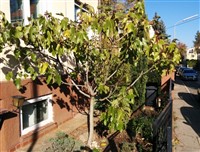 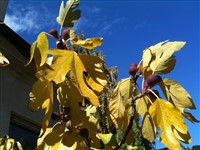  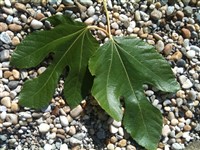
| Yield |
Medium |
| Fruits dropping |
No fruit drop |
| Alternance |
Weak |
| Sensitivity to splitting |
Resistant |
| Crop begin date (day-month) |
Vienne:15-07 |
| |
| External characteristics |
| Skin color |
Violet-blue, almost black |
| Skin thickness |
Medium |
| Shape |
Pyriform |
| Stalk |
Breaks off readily |
| Stalk shape |
|
| Neck |
Medium |
| Neck color |
Green, sometimes pink reflections |
| Eye |
|
| Eye color |
Dark red |
| Average weight (grams) |
55 g |
| |
| Internal characteristics |
| Pulp color |
Dark red |
| Seeds |
Felt, few |
| |
| Organoleptic evaluation |
| Texture |
Juicy |
| Sugar |
Sweet |
| Taste |
Excellent |
| Perfume |
Medium |
| Organoleptic descriptors |
Fruity, Strawberry, Red berries |
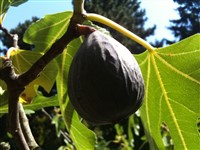 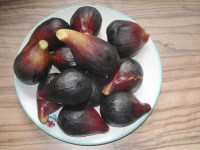 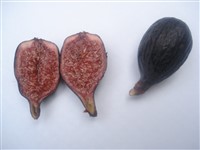
| Yield |
Good |
| Fruits dropping |
No fruit drop |
| Alternance |
Weak |
| Sensitivity to splitting |
Very resistant |
| Crop begin date (day-month) |
Vienne:12-09 |
| |
| External characteristics |
| Skin color |
Dark violet-blue |
| Skin thickness |
Thick |
| Shape |
Pyriform |
| Stalk |
Does not break off readily |
| Stalk shape |
|
| Neck |
Very short |
| Neck color |
Green, sometimes pink reflections |
| Eye |
|
| Eye color |
Dark red |
| Average weight (grams) |
35g |
| |
| Internal characteristics |
| Pulp color |
Dark red |
| Seeds |
Felt, few |
| |
| Organoleptic evaluation |
| Texture |
Little juicy |
| Sugar |
Sweet |
| Taste |
Very good |
| Perfume |
Strong |
| Organoleptic descriptors |
Sweet, Red berries, Fruity |
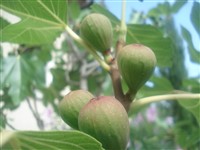 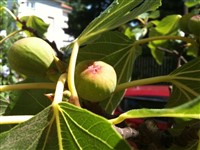 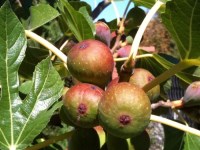  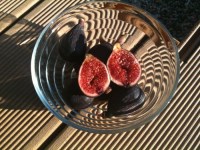 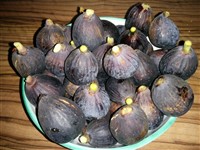
|












